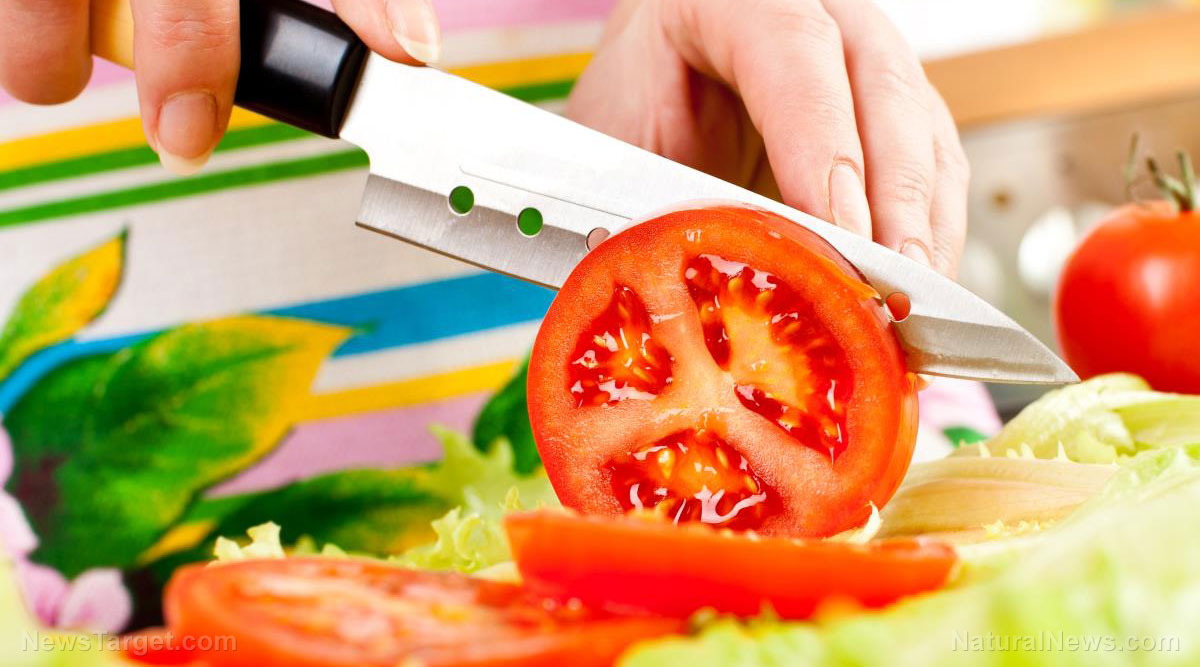
Advertisement
When you have a bountiful home garden, you will occasionally have too much of a certain vegetable after harvest season. If you have more tomatoes than you can eat, it’s best to know how long you can store them using your preferred method, whether that’s at room temperature, in the fridge or canned.
The shelf life of tomatoes depends on how and where you store them. Factors like light, oxygen, moisture and temperature as well as the common spoilers (bacteria, mold, yeast) also affect their shelf life. Protect tomatoes from these factors and you can make them last longer.
Storing tomatoes at room temperature
Tomatoes are good either fresh or canned. The majority of ripe tomatoes can remain edible at room temperature for about seven to 10 days. Meanwhile, canned tomatoes can last for about 18 months if unopened.
There are different types of tomatoes, like cherry tomatoes, grape tomatoes, green tomatoes and plum tomatoes. They’re usually red, but some can be orange, yellow or even purple.
Plum tomatoes have a longer shelf life compared to other tomatoes because of their hardened flesh.
When storing fresh tomatoes, keep them away from sunlight with the stem scar facing upward. This minimizes the darkening and softening of the fruit.
If you have unripe tomatoes from a grocery store, they will last for an additional three to five days. For brief storage, store tomatoes in a cool room in a paper bag.
If you have canned tomatoes, they can last on the shelf or in a fridge for 12 to 18 months. If you open a can, try to use up all the tomatoes because you only have about seven days before they go bad.
Storing tomatoes in the fridge
Refrigerated tomatoes will last for about 10 days. It’s best not to eat refrigerated tomatoes older than two weeks because they might make you sick.
Ripe tomatoes that you can’t use instantly should be refrigerated. Doing this helps delay or even stop the ripening substantially so they don’t rot too quickly.
According to some experts, you should take refrigerated tomatoes out of the fridge for 24 hours before using them. This can help restore any missing taste during the cooling process.
Store unripe tomatoes in a cabinet or on the kitchen counter until you’re ready to use them.
Storing tomatoes in the freezer
Tomatoes stored in the freezer should last up to six months.
When stored properly, tomatoes will retain their quality for three months. Any longer and the flavor will slowly deteriorate. Tomatoes continually frozen at 0 F will last indefinitely.
If you have a lot of ripe tomatoes that you won’t be using for a while, you should freeze them as is. Before freezing tomatoes, wash them and rub them dry. Next, arrange them on a tray and ensure they don’t touch each other before placing them in the freezer. After the tomatoes are frozen, store them in an airtight container or freezer bag.
Once thawed, the tomatoes will be soft because of cell damage from freezing. Thawed tomatoes are best for cooking.
Storing cooked tomatoes
Cooked tomatoes stored in the refrigerator can last for about four to six days. Refrigerate cooked tomatoes and store them in small sealed containers or ziplock paper bags for best results.
Bacteria will develop quickly at temperatures between 40 and 140 F. Get rid of cooked tomatoes if you keep them at room temperature for two hours or longer.
Freeze cooked tomatoes in sealed containers or freezer bags to extend their shelf life.
What’s the best way to store tomatoes?
If you want tomatoes to last long, place unripe tomatoes stem side down in a cardboard box or paper bag. Arrange the tomatoes in a single layer and store the container in a cold place until the tomatoes ripen and turn red.
Keep fully ripe tomatoes on the shelf away from sunlight at room temperature. The tomatoes must be arranged in a single layer and with enough space so they don’t touch each other. Keep the stem facing up and use them within a few days.
The fridge is the best place to store overripe tomatoes. The moist air prevents the tomatoes from ripening so they will last for three more days.
How to tell when a tomato has gone bad
Here’s how to tell if tomatoes have gone bad.
- Skin softening – The first symptom of rotten tomatoes is skin softening. You might have trouble telling the difference because tomatoes are soft when ripe, but you can check this when you first purchase them at the market or a farmers market. Gently squeeze tomatoes to check for soft spots.
- Leaking liquid – Tomatoes that have gone bad will start leaking liquid. If your tomatoes leak, throw them away immediately.
- Mold – Rotten tomatoes with mold have gone past the soft and liquid stages.
- Fruit flies – Tomatoes that have gone bad will attract fruit flies.

How to make tomatoes last longer
Knowing how to make tomatoes last longer ensures that you can enjoy tomato-based dishes even during winter.
Here are some suggestions on how to preserve tomatoes:
Freezing
The best way to make tomatoes last is by freezing chopped tomatoes. Follow the steps below if you want to freeze tomatoes:
- Blanch or submerge the tomatoes in boiling water for about two to three minutes.
- Remove the tomatoes and submerge them in a cold ice bath to stop the cooking process.
- This step is optional, but you can remove the outer skin of the tomatoes after blanching.
- Drain the tomatoes and dry them.
- Place the tomatoes on a tray lined with parchment paper and freeze for 45 minutes to an hour.
- Place the frozen tomatoes in a tightly sealed bag. If you have vacuum-sealed bags, use them.
Pickling
Pickling preserves the tomatoes in a salty, briny pickling liquid. Pickling often uses a liquid made of vinegar, sugar or salt. You can also include other spices if you want to tweak the brine ingredients.
Typically, pickled tomatoes will last about several weeks in the fridge. The combination of vinegar and salt provides a very acidic environment that prevents the growth of bacteria.
Canning
There are two methods of canning used to preserve food: water bath canning and pressure cooking canning. Tomatoes require the water bath canning method.
Water bath canning is only used for high-acid fruits and vegetables. Tomatoes are on the cusp of this category, but adding some lemon juice to them makes for an acidic environment.
Prevent food poisoning by following proper guidelines for canning.
Dehydrating
If you have an oven or food dehydrator, you can also try dehydrating tomatoes. Dehydration drains the tomatoes of 90 to 95 percent of their water content, effectively slowing down the rate at which they spoil.
Dehydrated tomatoes must be stored in an airtight container to maximize their shelf life.
Store fresh or canned tomatoes using your preferred method to make them last longer in your pantry. Alternatively, you can try pickling, canning or dehydrating them.
Sources:
Advertisements








